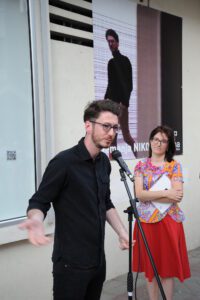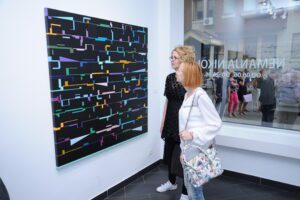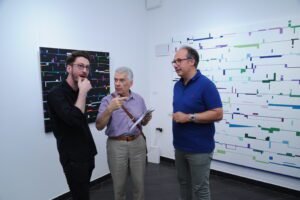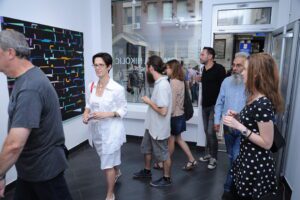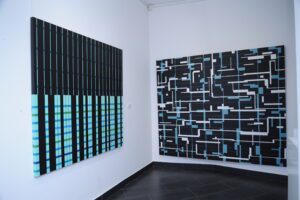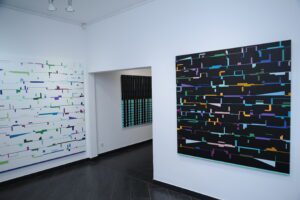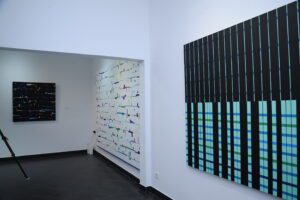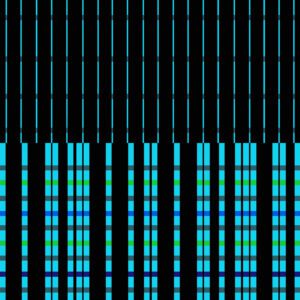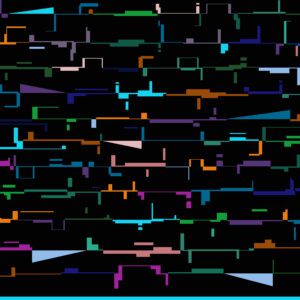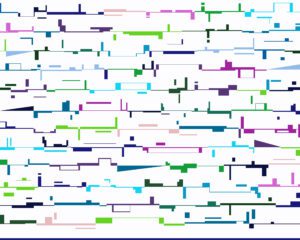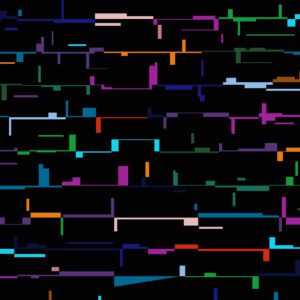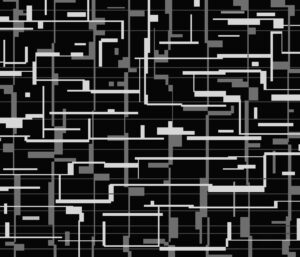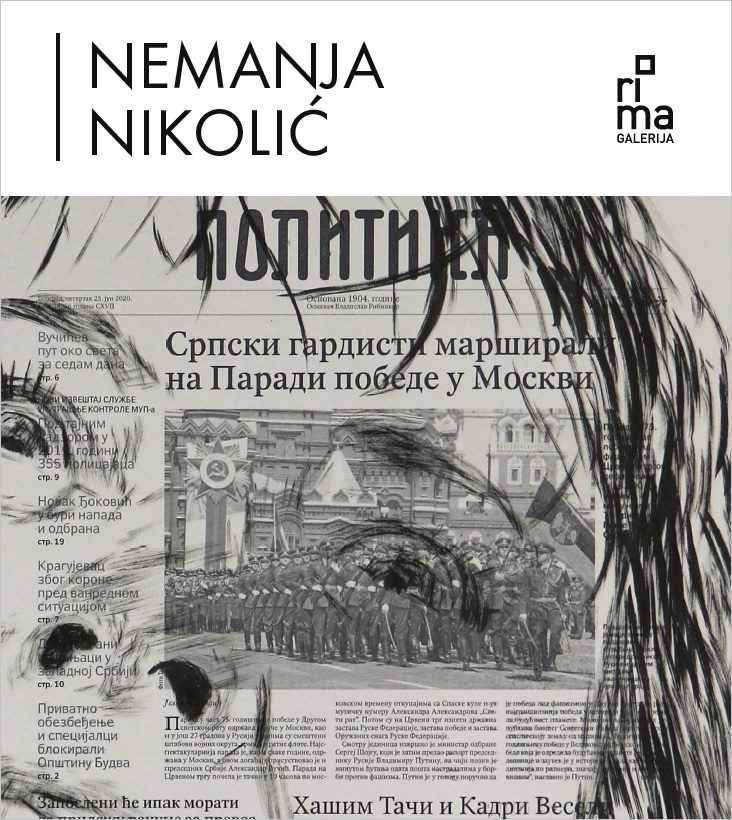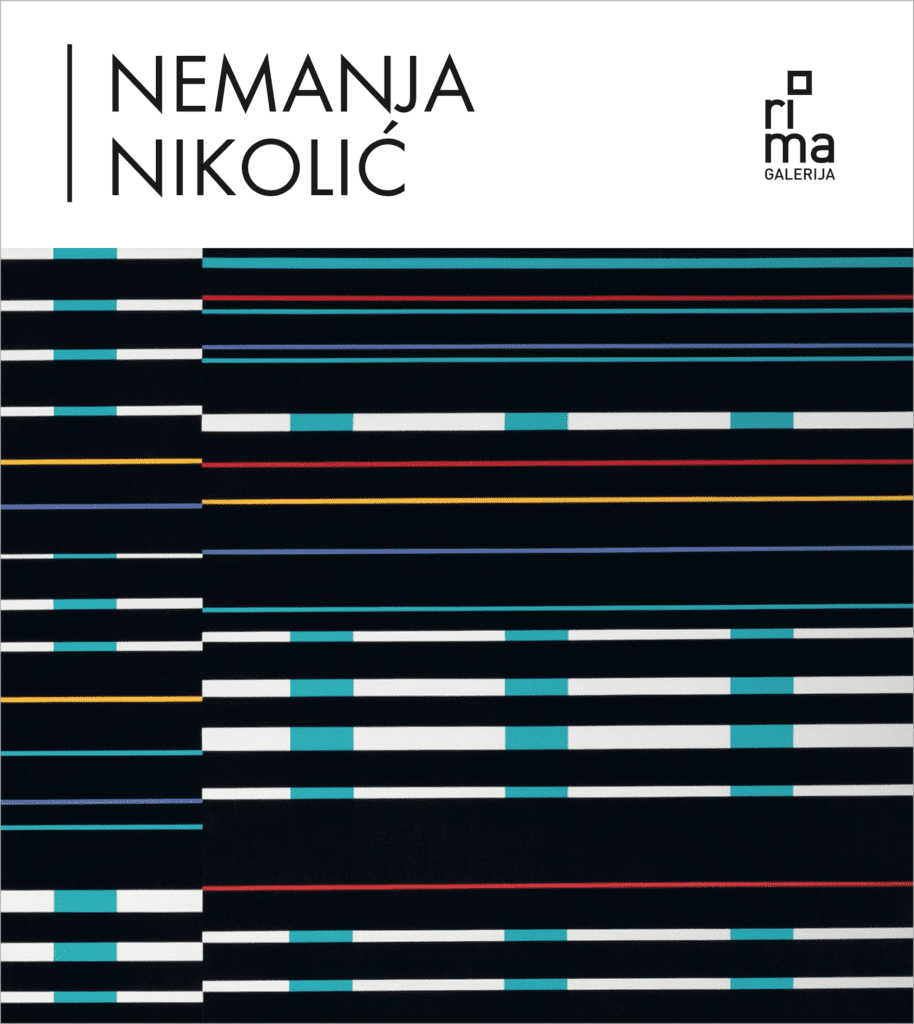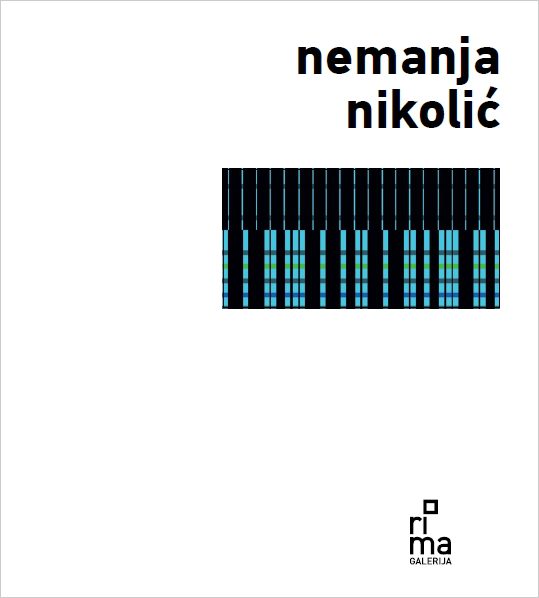Velimir Popović
In the Rhythm of Unfinished Crystallisations
It seems that the contemporary theory of abstract painting is frequently saturated with its rich history. From Kandinsky, over cubo-futurism, lyric abstraction, action painting, minimalism, post-geometric abstraction and the immanent analyses of the method of its origin, one can locate the rules that link all of these diverse tendencies into certain lines of development. Within the mentioned saturation these lines of development begin to function as certain crystallisations. On the other hand, the geometrisation of abstract visual patterns has always contained a rationalising tendency.
In the new series of (post)geometric abstractions of Nemanja Nikolić, entitled Vanishing Fiction, the process of the rationalisation of perceptive patterns becomes intuitive. More precisely, intuition is herewith observed as method, or even more precisely, as a kind of programme. In this text we shall endeavour to show in what way it is realised through the processes of crystallisation, thus leading to the generation of this series of paintings.
The meanings of the words that comprise the title lead us further to the model of interpretation that can facilitate the understanding of Nikolić’s series of paintings.
Rhythm usually represents a regular repetition of movement which realises its regularity by means of a logical pattern – it signifies the aspiration to establish a (superlatively) regular arrangement of moving pictures in the relationship between the accentuated and non-accentuated, long and short sequences, and also in their most diverse combinations. However, when Slobodan Šijan calls his work In the Rhythm of Howard Hawks, this word acquires a poetic character and therefore the harmonisation brought about by a certain rhythm is determined as a tendency to establish a particular whole with a precisely defined immanent logic. Since the function of intuition in this case is identical to the function harmonisation has in cognitive processes, we can ascertain that Nemanja consistently follows Šijan’s method in establishing a specific rhythm: the result of the consumption of a film is an intuitive creation of a certain pictorial rhythm pattern.
It is important to indicate here that rhythm in the mentioned example is not realised in order to harmonise within one medium, but in its migrations between different media of expression. Stevan Vuković has designated that process – after Jay David Bolter and Richard Grusin – as remediational. Despite the fact that such a remediational process is important for the characterisation of this process, in order to facilitate a more profound analysis of the given pictures, it is much more useful to focus on intuition, or the immanent realisation of a certain aspect of expression. The consequences of this decision will become visible somewhat later.
Let us return now to the analysis of the meanings of words from the title. Namely, in the medium of film editing derives from a certain realised rhythm, while a two-dimensional representational surface derives that kind of composition process as a layered crystallisation. When certain film sequences are arranged frame by frame, or a piece of film is simply unfolded, that surface will be divided into horizontal or vertical layers. Therefore, this type of crystallisation can be defined as layered.
The use of the word crystallisation can be positioned between the metonymic and metaphoric. Literally, it represents the process of crystallisation where each crystal represents a regular geometric form of minerals in nature. Crystal can also be defined as a result of a regular arrangement (crystallisation) of molecules and atoms. If, by a certain analogy, the molecules and atoms from the previous definition are replaced by signs from within the frames handled by editing, then one can ascertain that the crystallisation in question is realised between those signs and the pictorial signs on the surface of the picture. Nevertheless, the intention which imposes the vector upon intuition performs an almost full associative transformation of those signs. This mediation is managed by a certain established experience, so that it always evolves primarily immanently, thus confirming that one can only conditionally speak of remediation in thematising these pictures.
The crystallisation from the title is described as unfinished, meaning that the rhythms we have mentioned previously cannot be fully harmonised into a certain whole. The unfinished quality is here the precondition of transcendence. It brings into Nemanja’s horizontal (layered) rhythms the possibility of updating. It is important to mention that updating requires a complete inquiry into the process of the generation of these pictures. At this instance pure intuitions turn into empirical and vice versa.
(Complete text in printed edition)
